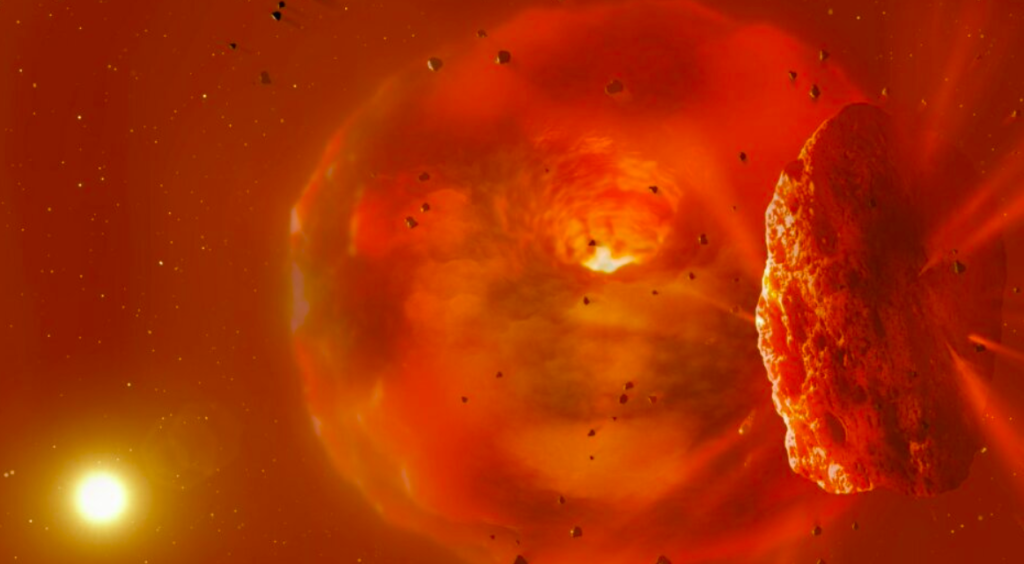Without their awareness, European astronomers have recorded the first-ever footage of an exoplanet crash and its aftermath. The data was discovered on social media by an amateur astronomer, and now the organization can use this unintentional observation to further exoplanet study. At 1,800 light-years from Earth, they might even learn something surprising about the solar system of the two unfortunate masses.
It all began with an observation of 2MASS J08152329-3859234, a star classified as “otherwise unexceptional.” (Instead, the star is now known as ASASSN-21qj because it is a little bit more remarkable.) When they decided to post part of the optical and infrared photometry data of the star on social media, research teams from the Universities of Bristol and Leiden University were viewing the data. The University of Bristol claims that an unidentified “eagle-eyed amateur astronomer” observed the star’s light curve and an unusual infrared brightening. They unintentionally started a two-year deep dive when they replied to the researchers’ message.
The cause of the peculiar brightness spike of the Sun-like star is explained in a report published in Nature. Two exoplanets in the orbit of ASASSN-21qj collided, according to data from NASA’s Wide-field Infrared Survey Explorer (WISE) and California’s Las Cumbres Observatory Global Telescope Network (LCOGT). These “mini-Neptunes or super-Earths” were big enough to leave behind a heated, prolonged residue. Due to the fact that the collision happened between two and sixteen astronomical units from ASASSN-21qj, it appeared as though the star was becoming brighter due to the infrared radiation from its remnant.
Soon after the impact, astronomers noticed a subsequent darkening. This happened when debris from the collision formed a big cloud and moved in front of ASASSN-21qj. The team calculates that the debris cloud’s orbit is at least 900 days long because the eclipse lasted for approximately that long. They intend to keep researching the cloud, but it might possibly crash with other debris and release material in a quick or slow way.
This observation, which came as a “complete surprise,” may eventually lead to other discoveries. The aftermath of an exoplanet collision can teach us a great deal about how new celestial bodies develop and about our own Moon, which is believed to have originated from an impact with Earth.
